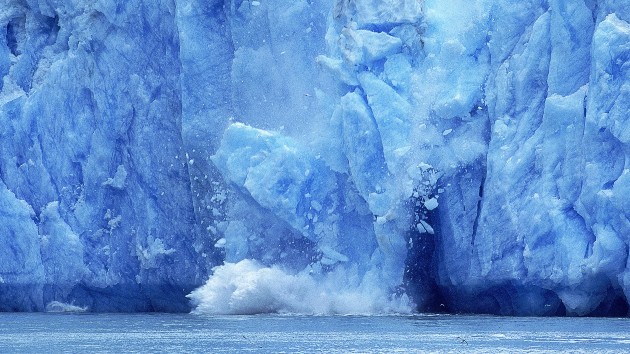
(NEW YORK) — Scientists are racing to determine what will happen as a result of melting glaciers before the repercussions of climate change on communities become a reality.
Researchers are especially worried about the increased risk of flood outbursts from glacial lakes, which can pose threats to residents who live downstream, according to a new study published Thursday in Nature Climate Change.
A glacial lake is a body of water that forms when a glacier erodes into land and then its water melts into the depression that forms. An outburst flood occurs when one of the naturally occurring dams break, sending a tidal wave of water out of the depression.
The risk is especially profound in the Third Pole, the region that encompasses the Hindu Kush Himalayan mountain range, the Tibetan Plateau and surrounding areas. It has the largest number of glaciers outside of the polar regions, according to the study.
The Third Pole has distinctly higher warming rates than the Northern Hemisphere, and warming in the region is leading to rapid loss of ice and the formation and expansion of glacial lakes, which then pose a severe threat to communities that reside downstream, scientists said.
“Particularly, when water is suddenly released, glacial lake outburst floods can devastate lives and livelihoods up to hundreds of kilometers downstream of their source,” the study states.
The highest risk is in the eastern Himalayas, and the overall risk in the region is expected to triple as a consequence of more lakes developing, according to the study. The outbursts can be triggered by a number of mechanisms, including intense precipitation and snow or, most commonly, from the impact of ice or rock avalanches into a lake.
Glaciers across the Himalayas have experienced significant ice loss over the past 40 years, with the average rate of ice loss doubling in the 21st century compared to the end of the 20th century, according to a study published in Science Advances in 2019.
A glacial lake outburst flood was initially blamed for the “water monster” of rushing water and sediment that plunged down a steep flank in the Himalayas and into a hydroplant in northern India in February, killing dozens of people and leaving more than 100 missing.
The results of the study highlight the need for urgent, “forward-thinking” and collaborative approaches to mitigate future impacts of climate change, the researchers said.
Copyright © 2021, ABC Audio. All rights reserved.
